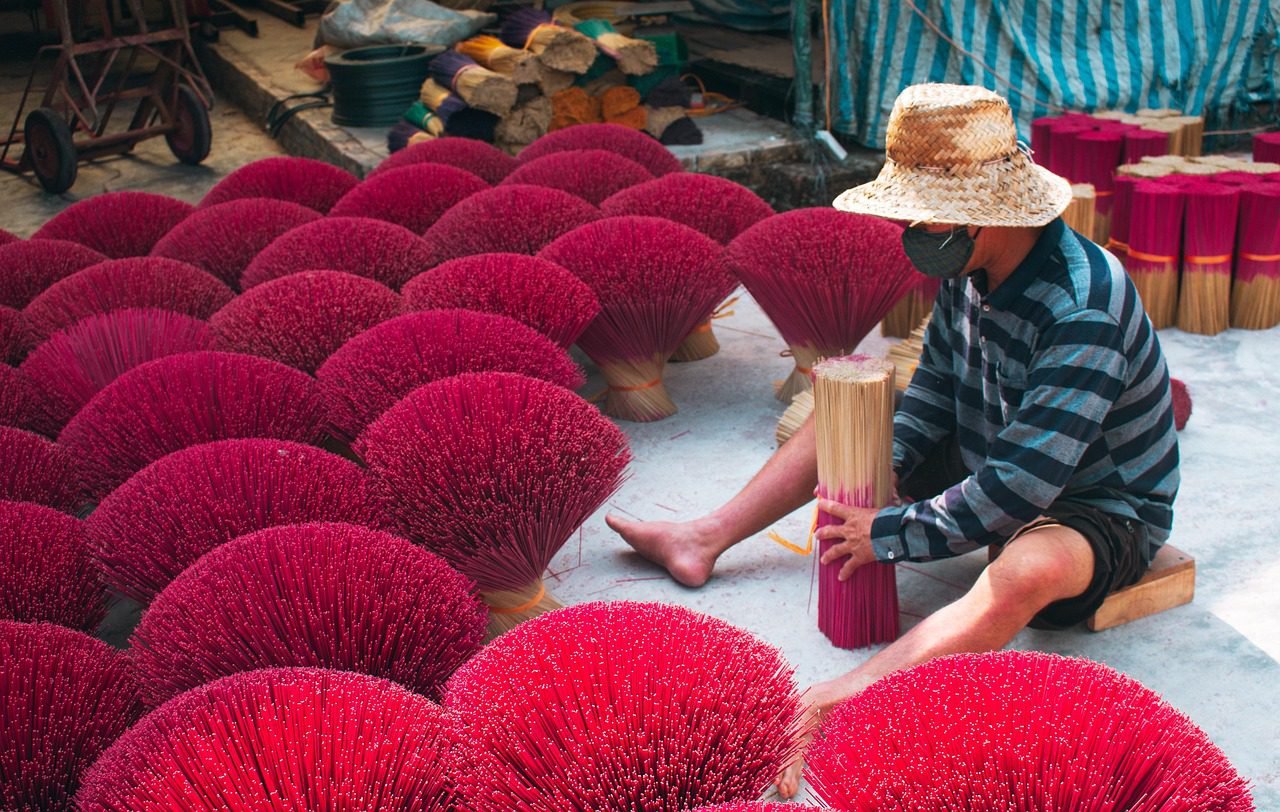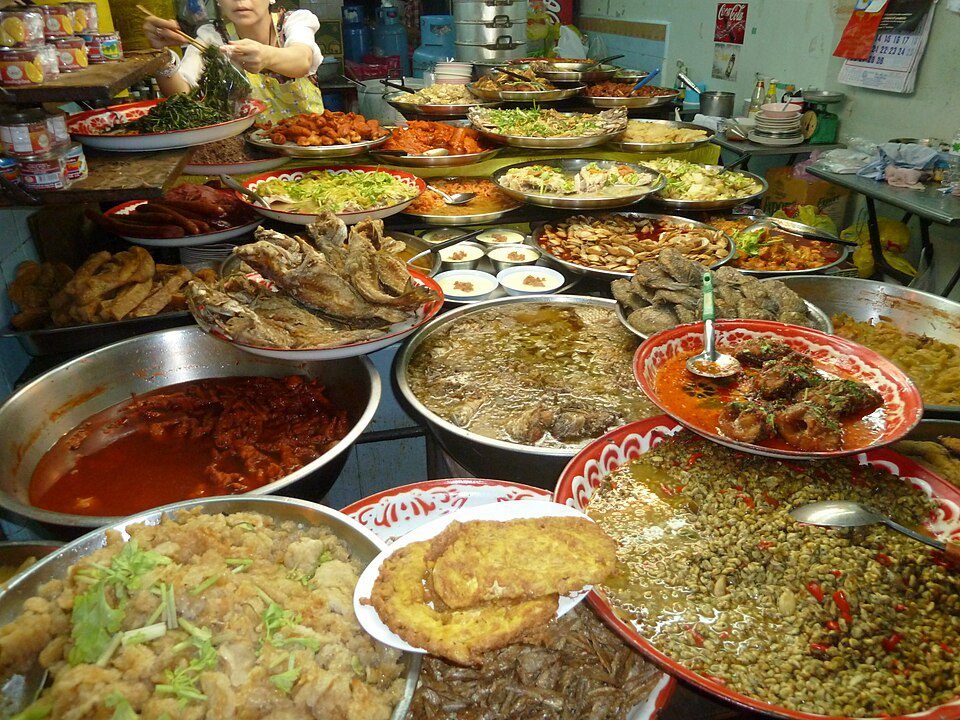A Comprehensive Budget Travel Guide to Southeast Asia 2025

Planning a budget trip can be overwhelming with so many countries to choose from and a limited amount of money to spend. That’s why we have created a comprehensive budget travel guide to Southeast Asia. In this guide, we will provide you with all the information you need to plan an unforgettable trip, from transportation and accommodation to food and activities.
Choosing the Right Time to Visit Southeast Asia
Weather considerations

The climate in Southeast Asia varies greatly depending on the specific country or region. Some of the main weather factors to consider when planning your trip include:
- Monsoon season: Many areas experience a rainy monsoon season from June to October. During this time, torrential downpours and flooding can occur.
- Humidity: With its tropical climate, humidity levels remain high throughout much of Southeast Asia year-round. This heat and moisture can take some getting used to.
- Typhoon season: From October through December, the region is threatened by typhoons, which can disrupt travel plans. Northern Vietnam, Cambodia, and the Philippines are most at risk.
Peak and off-peak seasons
Understanding peak travel seasons is important for budgeting appropriately. Keep the following dates in mind when picking dates for your trip:
- December-February: High season due to Christmas/New Year holidays in Western countries. Prices spike globally, including for flights and accommodation worldwide.
- July-August: The summer holidays in Europe and North America lead to a peak season, though the weather can be hot and humid. Monsoon rains start in some areas.
- Chinese New Year (late January/February): Honored widely in Asia, it’s a peak travel period, and reservations are needed far in advance.
For lower crowds and cheaper options, aim to visit Asia in shoulder seasons from March-June and September–November, when prices drop 20–40% compared to winter highs. The weather remains pleasant and tolerable.
Festivals and events to consider
Part of the fun of travel is experiencing local festivals. Some of the major events happening annually across Southeast Asia include:

- Songkran (Thailand, mid-April): Thailand’s New Year water festival sees city-wide friendly water fights.
- Bali Arts Festival (Indonesia, June–July): Catch top-class traditional dance, crafts, music, and processions.
- Diwali (India/Bali Nov.): Hindus and many locals celebrate the festival of lights with decorations, fireworks, and feasts.
Checking major events allows you to plan your visit during awesome cultural experiences or avoid very busy/expensive times. Flexible travel also allows spontaneity to follow festivities, enriching your backpacking trip experience.
Determining a Realistic Budget
Factors to consider when setting a budget
When planning for backpacker travel on a budget in Southeast Asia, it’s important to consider the many factors that influence daily and overall trip costs, such as:
- Destination inflation: higher costs in major cities like Singapore, and Kuala Lumpur vs. rural Thailand, and Vietnam.
- Accommodation standards: Dorms, guesthouses, or private rooms impact nightly rates on average from $10-30.
- Food habits: street food vs. dining out, local cuisine or Western fare, alcohol or not impact food costs.
- Transport methods: Budget flights, buses, or trains vs. taxis raise transportation expenses.
- Attractions: Some sights require entrance fees that add up over months of travel.
- Visa and insurance costs: Visa-on-arrival fees apply, and travel insurance is recommended for emergencies.
Careful budgeting factoring in these variables will lead to realistic cost projections month-to-month or for an entire Southeast Asia trip. Flexibility is key to staying on budget with unexpected expenses.
Average costs of accommodation, food, transportation, and activities
Here’s a breakdown of average daily costs to expect in some popular Southeast Asian destinations on $30-$50 daily budgets:
| Location | Accommodation | Food | Transportation | Activities/Day | Estimated Daily Budget |
| Bangkok, Thailand | $10-15 | $5-10 | $2-5 | $5-10 | $25-40 |
| Siem Reap, Cambodia | $7-12 | $3-7 | $1-3 | $3-8 | $15-30 |
| Kuala Lumpur, Malaysia | $12-20 | $6-12 | $3-6 | $5-10 | $30-50 |
| Ho Chi Minh City, Vietnam | $8-15 | $3-8 | $1-4 | $3-8 | $18-35 |
| Bali, Indonesia | $12-20 | $4-10 | $2-5 | $5-10 | $25-45 |
| Manila, Philippines | $10-15 | $4-8 | $2-4 | $3-8 | $20-35 |
By sticking to this inexpensive formula, backpackers can easily stretch limited budgets to 3-6 months in Southeast Asia with regular affordable experiences and activities integrated into their daily itineraries.
Popular budget-friendly destinations in Southeast Asia
With its low cost of living and wealth of natural and cultural attractions, the entire Southeast Asia region lends itself well to budget travel. Some of the top cities and countries for affordable experiences include:
- Vietnam: Ho Chi Minh City, Hanoi, Ha Long Bay. Great food, friendly people, and beautiful landscapes at low prices.
- Thailand: Bangkok, Chiang Mai, and the islands – the world’s #1 backpacking hub, with perfect budget infrastructure and famous hospitality.
- Indonesia: Bali, Lombok—beach bum culture mixed with spiritual sights and activities for all budgets.
- Philippines: A popular stop for many on their Southeast Asia backpacking adventure. Boracay, Palawan, and Cebu: stunning natural areas and beaches alongside budget-friendly big city Manila.
- Malaysia: Kuala Lumpur, Penang, and Langkawi: a modern mix of cultures at moderate costs with great street food.
- Cambodia: Siem Reap, Phnom Penh, and the coast—historic temples and friendly people in an inexpensive country.
With over a dozen countries spread across the region, budget travelers have endless affordable destination options. Flexible itineraries allow migrating between top spots.
Unique attractions and experiences in each country
Beyond the iconic sights, Southeast Asia offers myriad unique cultural experiences off the tourist trail. Here are some top-budget activities to seek out:
- Vietnam: Join street food tours, try rural homestays with farm activities, and hike to untouched nature spots.
- Thailand: Participate in community volunteer projects, explore hill tribes’ cultures, and island hop to secluded paradises.
- Indonesia: Go volcano hiking, observe local crafts like batik making, and spot orangutans in their native habitat.
- Philippines: Snorkel to pristine dive sites, interact with indigenous tribes in Palawan rainforests, and chill on untouched beaches.
- Malaysia: Try the authentic hawker food trail, visit iconic street art colonies, and discover colonial heritage on Melaka walks.
- Cambodia: Meander between rural villages by bicycle, volunteer to teach English, and get spiritually enriched at pagodas.
With persistence and local knowledge, memorable experiences beyond the guidebooks are easy to find across Southeast Asia’s diverse regions and cultures.
Transportation Tips for Budget Travelers
Comparing different modes of transportation
For maximizing a travel budget, comparing the pros and cons of various transportation methods in Southeast Asia is important:

- Buses: usually the cheapest option, though less comfortable over long distances. Buses connect all major cities, making it easy for backpackers to explore during their trip to Southeast Asia.
- Trains are a comfortable alternative in countries like Vietnam and Thailand. Marginally higher fares than buses, but include sleeper cabins where possible.
- Domestic flights are more costly than land transit but save precious travel time between faraway destinations like Bangkok to Chiang Mai or Siem Reap to Ho Chi Minh City.
- Rideshares: Applications like Grab make inter-city taxi transfers affordable, especially for groups aiming to split rates.
- Motorbike/scooter rentals can enhance your flexibility while backpacking Southeast Asia. They are popular and economical in Thailand, Vietnam, etc., but require careful consideration of road safety aspects.
Weighing time versus money tradeoffs in mobility aids in smart trip planning and financial management of the travel budget.
Tips for booking affordable flights and finding cheap transportation options within countries
With some research and flexible planning, significant savings are possible on transportation across Southeast Asia:

- Use flight search engines and consider budget airlines like AirAsia, Lion Air, and VietJet Air for cheaper tickets booked in advance.
- Check bus/train schedules on 12Go. Consider using Asia or other aggregators for multi-route trip planning during your Southeast Asia backpacking journey.
- Be open to night buses that save on a night’s accommodation cost.
- Consider rideshares like Grab for airport transfers rather than expensive taxis.
- Compare reputable motorbike/scooter rental outfits and negotiate rates for weekly deals.
- Buy a multi-ride bus/train pass for flexibility if you make multiple trips between several cities during your Southeast Asia backpacking journey.
- Travel off-peak mid-week when rates dip and crowds lessen on popular routes.
With some preliminary legwork, budget travelers can cut major transportation costs by 30–50%. Flexible trips allow snapping up last-minute travel deals too, when available.
Accommodation Options for Budget Travelers
Hostels and guesthouses
For the ultimate budget accommodations, consider hostels and guesthouses prevalent across Southeast Asia. They provide:

- Dormitory beds range from $6–12 per night on average for clean, safe shared rooms. Many have female dorms.
- Some also offer basic private rooms from $15–25, which are good for couples.
- Common areas to socialize and swap travel tips with other backpackers.
- Many host-guest activities, food discounts, or tour bookings are done through the front desk.
- Prime locations near sights let you avoid transport costs in popular destinations.
With good reviews, properties under the Hostelworld, Booking.com, or Agoda networks ensure acceptable standards at rock-bottom rates.
Budget-friendly hotels and homestays
For more privacy than dorms, hotels, and village homestays are excellent value:
- Hotel rooms range from $15–25 per night in smaller cities for clean, functional 2- to 3-star options.
- Upgraded air-con rooms in major places like Bangkok are $25–35. Often includes breakfast.
- Rural homestays costing $10–20 provide a unique cultural experience, delicious family-style meals, and insider community experiences.
- Book ahead online or directly at the property for the best last-minute and long-term stay discounts many offer.
With basic amenities and affordable rates, these make comfortable short-term or long-term budget accommodation possible.
Tips for booking accommodation and finding the best deals
To maximize savings on places to stay:
- Use booking aggregators to compare numerous properties, read reviews, and contact hosts directly for cheaper advertised rates when possible.
- Flexible travel allows snapping up last-minute room availability at massive discounts of 30–50% sometimes.
- Book day-by-day accommodations as travel progresses instead of predetermined multi-night blocks.
- Consider homestays and dorms that include generous free breakfasts or dinners at their affordable published rates.
- Ask about long-term stay discounts at properties for extending a week or more at a single destination.
- Check notice boards at hostels or guesthouses for travelers seeking roommates at even lower shared costs.
With diligent pre-planning and a flexible on-ground approach, budget travelers can comfortably experience Southeast Asia for as little as $10-15 per night or even less.
VII. Eating on a Budget
Local street food vs. restaurants
Southeast Asia is world-renowned for its incredibly cheap and diverse street food landscapes. On a daily budget of $5–10:

- Street stalls, food carts, and hawker centers offer filling local meals for $1–3 each, often with more variety than restaurants, making them perfect for a backpacker budget focused on food and drink.
- Sample curries, noodle soups, rice dishes, and fruits alongside locals for authentic cooking without extra service costs.
While restaurants catering to tourists charge $5–15 per meal, creative budget travelers make street food the core of their dietary experiences.
Tips for finding affordable and delicious local cuisine
Some strategies for maximizing value from Southeast Asia’s culinary journeys include:
- Spot well-reviewed street vendors through recommendations at hostels/guesthouses.
- Check local Facebook groups or foodie forums for hidden foodie gems.
- Go for meals-to-go rather than dine-in cafe services.
- Visit night markets showcasing regional dishes from different ethnic communities.
- Markets sell fresh produce and ingredients to occasionally self-cater simple meals.
- Check supermarket shelves for cheap noodles and sauces alongside fresh bakeries and delis.
With open eyes and taste buds for adventure, budget travelers can eat well across Southeast Asia on remarkably low budgets.
VIII. Money-Saving Tips and Tricks

A. Bargaining and negotiating in local markets
Honing negotiation skills allows for big savings on purchases across Southeast Asia’s vibrant markets:
- Start roughly 30–50% lower than the asking price and negotiate your way up gradually.
- Compare multiple stalls to see standard prices before deciding.
- Be friendly yet firm, and always smile—locals don’t want to completely rip off smiling visitors!
- For large-volume bulk purchases, bigger discounts of up to 60–70% off are achievable.
Bargaining etiquette and confident haggling take some practice but become second nature with experience.
B. Free or low-cost activities and attractions
Many sights and activities around Southeast Asia involve little to no payment:
- Wander colorful streets, observe daily life, and watch cafe-style.
- Explore well-maintained parks, gardens, hiking trails, and cycling paths.
- Check event/culture calendars for cheap concerts, performances, and exhibits.
- Visit beaches, lakesides, and mountains for scenic relaxation without facility charges.
- Practice meditation at local temples and pagodas that accept donations, not fees.
With an open mindset, budget travelers always find enriching ways to fill their days.
C. Budget-friendly ways to explore natural beauty and cultural sites
Low-budget itineraries make Southeast Asia’s famous landscapes accessible:
- Hike volcanoes, mountains, and jungle trails, avoiding pricey organized tours.
- Rent basic bikes and scooters to circuit serene countryside roads and villages.
- Take local buses and Songthaews to reach remote areas at very low individual costs.
- Visit less frequented pagodas and ruins away from busy hotspots and entrance fees.
- Connect with local communities through informal homestays, farm stays near attractions.
With creativity and autonomous travel, even the most magnificent sights remain within budget reach.
IX. Staying Safe and Healthy on a Budget
A. Tips for avoiding scams and tourist traps
As an independent budget traveler, some precautions to avoid hassles include:

- Research common scams around transport, accommodation, money-changing, and sellers.
- Don’t accept drinks/food from strangers or leave bags unattended.
- Only take registered taxis/transport with working meters or pre-agreed fares to ensure a smooth trip during your Southeast Asia backpacking adventure.
- Be wary of commission-chasing guides pushing overpriced options.
- Visit official tourist information centers for reliable recommendations.
Maintaining street smarts and vigilance helps ward off risks in Southeast Asia.
B. Health precautions and vaccinations
Prior planning keeps your budget trip on track:
- Consult travel clinics for recommended vaccinations 4-6 weeks before departure.
- Pack basic first aid supplies and buffer supplies of medications like antimalarials.
- Carry sterile water for hydration and water purification options when away from cities/towns.
- Practice safe food/water handling, cover-up, and use insect repellent at dawn/dusk.
- Research state hospitals and travel insurance coverage for emergencies.
Small investments save potentially big medical expenses, leaving the budget intact for carefree adventures.
X. Connecting with Other Travelers and Locals
A. Budget-friendly social activities and meetups
Lonely Planet would be a boring trip. Southeast Asia brings people together affordably:
- Hostel activities include pub crawls, walking tours, and movie nights from $5 to 15.
- Street food tours, cultural walks, and cooking classes foster social learning.
- Cafes and co-working spaces host free talks, live music, and art exhibitions.
- Download apps like Meetup that show local social events and interest groups.
Embracing a multifaceted community aids cultural immersion outside touristic zones.
B. Utilizing local resources and recommendations
Valuable insider knowledge maximizes every destination:
- Chat with friendly hostel/guesthouse staff about hidden gems.
- Read travel blogs and international city Facebook groups.
- Ask backpackers at scenic spots for off-the-beaten-track suggestions.
- Participating in community programming by NGOs and social enterprise projects.
- Tap local friendly residents while people are watching at squares or parks.
Networking widely aids the discovery of rewarding budget activities far from guidebooks.
XI. Final Thoughts and Conclusion
A. Recap of key budget travel tips for Southeast Asia
- Research the costs of living and transportation before setting a flexible monthly budget.
- Opt for hostels, guesthouses, homestays, and street food to keep costs low.
- Visit shoulder seasons and negotiate for deals on accommodation and activities.
- Use travel agents, meet-ups, and locals to uncover free/inexpensive sightseeing.
- Stay vigilant against scams, but don’t fret about emergencies with travel insurance.
With strategic planning and on-ground frugality, Southeast Asia is achievable on a shoestring.
B. Encouragement to embark on a budget adventure in Southeast Asia
Southeast Asia is a paradise for independent budget travelers. Beyond luxe resorts lies:
- A cornucopia of natural and cultural wonders is accessible without deep pockets.
- A bustling, diverse region where kindness to strangers remains a way of life.
- Memories of enriching adventures, foods, and friendships are not found in any guidebook.
For those seeking life-changing experiences beyond the superficial, Southeast Asia offers budget backpacking bliss unlike anywhere else.
The greatest rewards await those willing to immerse themselves freely in their backpacking trip through Southeast Asia, without limits. Go forth and discover your inner traveler on a shoestring.
FAQs
What is the average budget for backpacking in Southeast Asia for 3 months?
The average budget range for 3 months of backpacker travel through Southeast Asia falls between $3,000 and $5000, depending on your style of travel.
Sticking to the budget tips outlined in this guide, such as guesthouses, street food, local transport, and free activities, can make $50–75 per day achievable for any Southeast Asia backpacking traveler.
Is it possible to travel to Southeast Asia on a tight budget?
Yes, it is possible to travel throughout Southeast Asia on a tight shoestring budget of $20–30 per day or less if you’re extremely frugal.
Prioritizing the cheapest accommodation, transport, and sticking to only local cuisine from hawker centers and markets can stretch limited funds further for low-budget backpackers.
Which countries can be visited in Southeast Asia on a budget travel itinerary?
Some of the most budget-friendly countries for Southeast Asia on a budget travel itinerary include Thailand, Vietnam, Cambodia, Indonesia, and the Philippines.
These destinations offer a mix of natural attractions, urban centers, and small towns where the costs of living and traveling are low compared to other regions in the world.
How much does it typically cost to travel to Southeast Asia per day?
Daily costs for travel in Southeast Asia can vary significantly depending on the destination and type of activity. However, on average, most backpackers aim for $30–50 per day, which covers modest accommodations like dorms or guesthouses, local transportation, street food, and some affordable activities or attractions. It’s possible to travel to Southeast Asia for even less with prudent budgeting.
What is the cheapest way to travel around Southeast Asia?
Some of the cheapest ways to travel around Southeast Asia on a budget include taking local buses between cities, opting for basic guesthouses and homestays for accommodation, eating mostly street food from hawker markets, and exploring free or low-cost attractions.
It’s also worth negotiating transport costs, bargaining at markets, and utilizing free WiFi to minimize connectivity fees.
Is it better to travel to Southeast Asia independently or on a tour?
In general, traveling in Southeast Asia independently rather than on a tour typically costs less money and allows for more flexibility.
However, group tours could be better for first-time visitors wanting planning assistance or those interested in social experiences.
An ideal combo is sometimes mixing periods of independent travel using this budget guide with occasional small group tours for certain activities or destinations.
How long is enough time for a Southeast Asia trip on a budget?
Most Southeast Asia backpacker trips range from 1-2 months for a faster-paced, shorter visit, 2-4 months for a moderately-paced trip hitting major destinations, 4-6 months for a relaxed, in-depth experience, or 6–12 months or more for true extended budget nomad trips.
Much depends on individual travel styles and budgets, but this guide’s tips make 3+ months quite feasible.
What is the best travel guide for planning a Southeast Asia trip on a budget?
Classic physical guides like the Budget edition of Lonely Planet’s Southeast Asia or Rough Guide to Southeast Asia provide excellent tips and recommendations for planning and traveling Southeast Asia on a budget.
Online, travel blogs and community sites can also offer invaluable budgeting and itinerary advice customized for independent travel, highlighted throughout this comprehensive Southeast Asia budget travel guide.
How much should I budget for transport and travel costs in Southeast Asia?
Transportation and travel costs will depend greatly on specific destinations and modes of travel chosen; however, a good baseline to budget would be $10–20 per day, which covers local buses, trains, occasional flights, or rideshares between cities.
Factoring in pre-booking cheaper flights in advance, prioritizing buses, and exploring by bicycle or motorbike when possible could see daily transport fees as low as $5–15 throughout Southeast Asia.




